Catch More Trout Fly Fishing: 27 Best Guide Tips
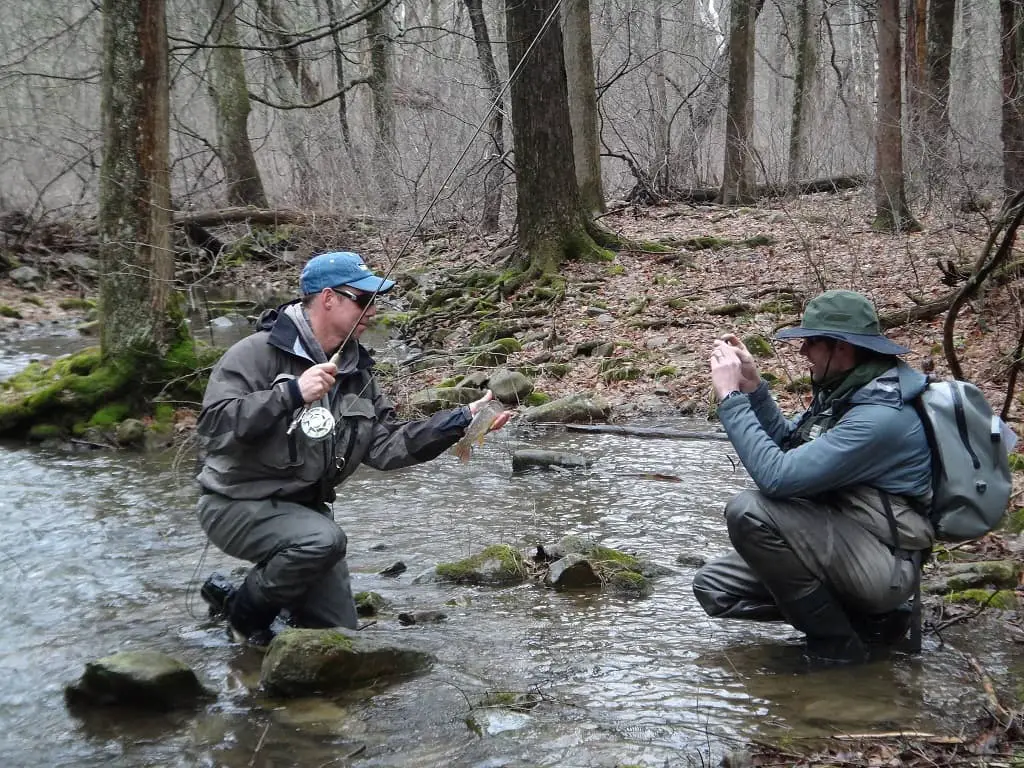
Have you ever fished with a top competition fly angler? I have!
I’ve fished with multiple competition anglers and top trout guides over the last 22 year. I do it becuase even though I’ve been guiding for 22 years, I can’t still learn and get better at catching trout.
I’ve watched them fish, I’ve studied them, I’ve learned from them, and one thing I can tell you is that these guys make it look like catching trout is really easy, and for them and for guys like me, it is easy.
If you want to catch more trout when fly fishing, you should do what the top fishing guides and top competition anglers do. These guys will catch ten times more trout than most average anglers.
I’ve been a guide for over 22 years and one of the things I have learned is that 90 percent of fly-fishing anglers do the same things poorly. The good news is these wrong things can often be easily fixed if you know what you’re doing wrong.
I’m going to share essential guide tips and what I’ve learned with you. Some of these tips you will not see anywhere else. This what I teach my clients to help them catch ten times more trout.
1. Use The Right Gear
Having the right fly rods and reels, the right line, leader, and tippets make a huge difference. Even a good pair of waders and boots helps you catch more trout because it can help you position yourself better.
2. Be An On-Going Student
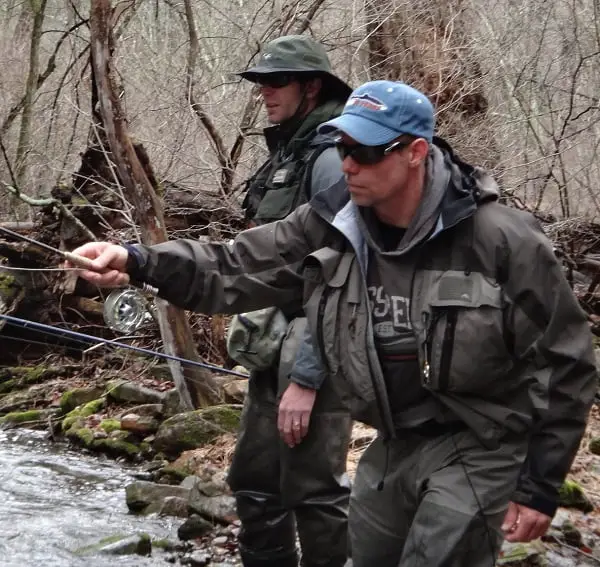
Keep learning and improving, and you will evolve into a fly fishing angler who catches a lot of trout.
By continuously learning, adapting, and trying new and improved methods, I know I can catch a lot more trout now than I could before.
The more you know, the easier it is to catch more trout when fly fishing. It’s as simple as that!
3. Think Outside The Box
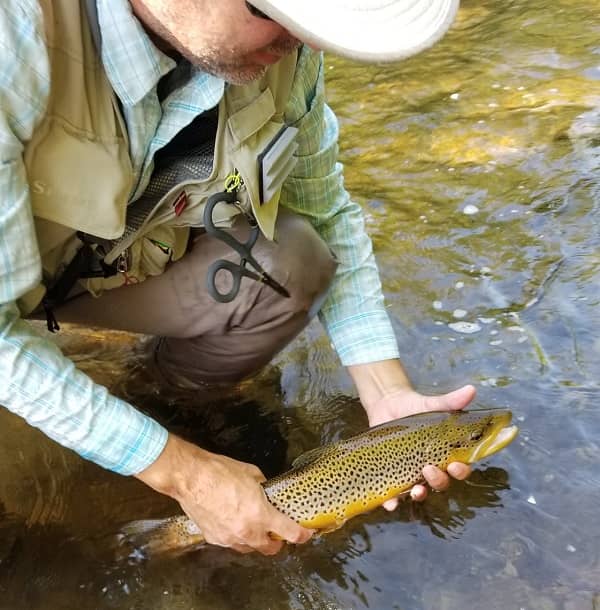
If your way of fly fishing doesn’t seem to be producing as many trout as you think it should, maybe it’s you and your current methods, and not the fish! Change whats not working and start looking at other ways to catch fish.
Don’t wait too long to get out of your rut and try new things, learn new methods, and explore new spots and new rivers so you can start catching more trout.
4. Fish Alone For More Trout, or Play Leap Frog
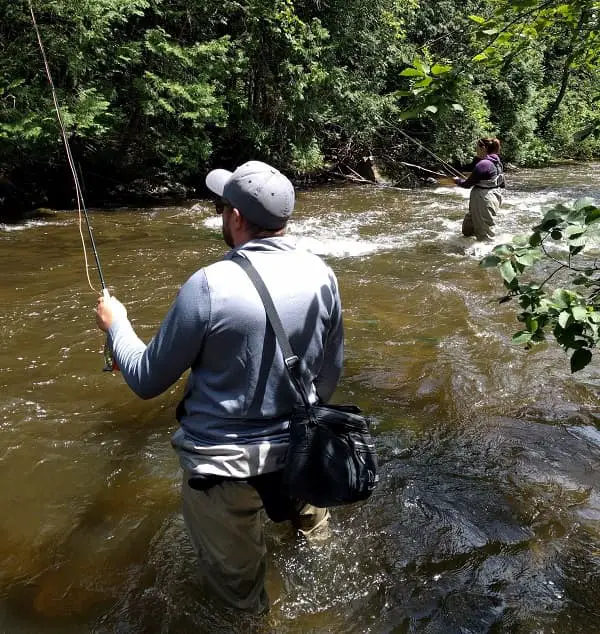
Some anglers like to go fly fishing with buddies, or a girlfriend, and I get that this is a fun way to fish, but it often makes it harder to catch wild trout, especially weary trout.
The problem with more than one angler is that too many anglers fly fishing on some rivers, especially in the same spot, which can easily spook the trout and limit your success.
Trout are not smart, they are instictually cautious.
If you want to catch the most fish possible, it’s better to fly fish alone or learn how to fish the leapfrog style.
The way Leapfrog works is that I will fish a spot by myself, while my buddy will quietly sneak past me and go fish the next spot up the river or far enough away that he won’t spook my fish. When I am done in my spot I will sneak past my buddy without spooking his fish and I will hit the next spot upriver of him.
This way I am still spending the day out with a buddy but we aren’t spooking each others fish and we both catch way more fish this way.
5. Change Flies Often: Rotate Your Flies
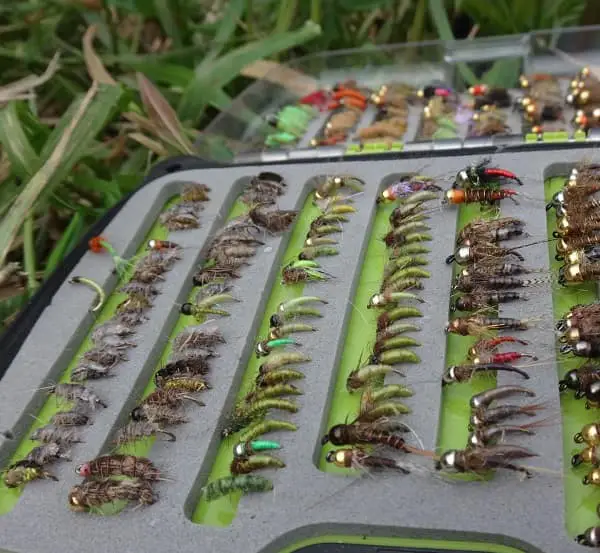
Sometimes, trout want flies that are an exact match of what is hatching at that time. But, that is not always the case.
In fact, even during a hatch, I will sometimes use attractor flies or something totally different than what is actually hatching, which can result in catching a lot of trout.
Sometimes, the fly that stands out from the hundreds of natural insects gets the trout attention.
I will often try to match the natural bugs as much as possible, but if that is not working well, I will start rotating through my fly box trying various sizes, shapes, and colors to see what they want.
Sometimes, an attractor pattern like a Royal Coachman Dry fly or a Rainbow Warrior nymph will catch way more fish despite not looking like the natural bugs on the water.
Give it a try, don’t get stuck being one-sided with the same fly all the time.
6. Use The Right Leader
Use the leader length that matches your method and the conditions. Casting an extra long leader is not good in tight cover or when fishing streamers, but could be great in big open clear water when fishing for nervouse trout.
When streamer fishing, my leaders are shorter somtimes 5 to 7 feet lone, especially if I need accurate placement of my streamer along logs.
7. Use The Right Tippet: Lighter Is Better
Trout are not smart, but they are cautious and they have great eyesight. I have seen trout turn their nose to a dry fly and not touch a fly below the surface simply because they see the tippet.
When fly fishing, you want to use the lightest tippet possible. You want a tippet that is so light that the fish won’t see it but is still strong enough that they won’t be breaking you off constantly.
8. Use The Right Setup
There is no excuse not to have your fly line and leader rig set up properly.
A correctly set up line, leader, and tippet can significantly improve your presentation and help you catch more trout when fly fishing.
I have proven leader setups that are used my guides and competition fly anglers on this website. Use them, they work!
9. Stay Off The Bottom When Nymphing
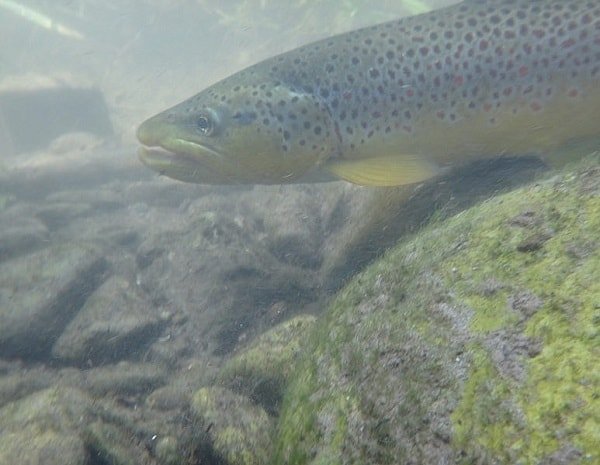
I just heard a study that said trout eat stuff on the bottom less than 13% of the time. In other words, trout feed upwards 87% of the time.
This confirms what I have been saying for years to all my fly fishing clients, and that is, “If you drag your flies across the bottom, you will catch fewer fish!”
The simple truth is that trout prefer to feed in the current above and beside them, and they don’t look down often so your flies don’t get seen if they are dragging along the bottom.
10. It’s Not Always About The Fly.
I don’t know how many times I’ve talked to anglers on the water, on the path, or in the parking lot, and when I tell them how many fish my clients caught, the number one question is, “What fly were you using?” Guys, this is the wrong question!!
It is extremely important to make sure you fish your fly properly!! Even if you have the best fly in the world on the end of your line, if you fish it poorly it won’t work very well, especially if you are trying to catch the bigger smarter trout.
11. Speed Control Is Critical: Get Drag Free Difts
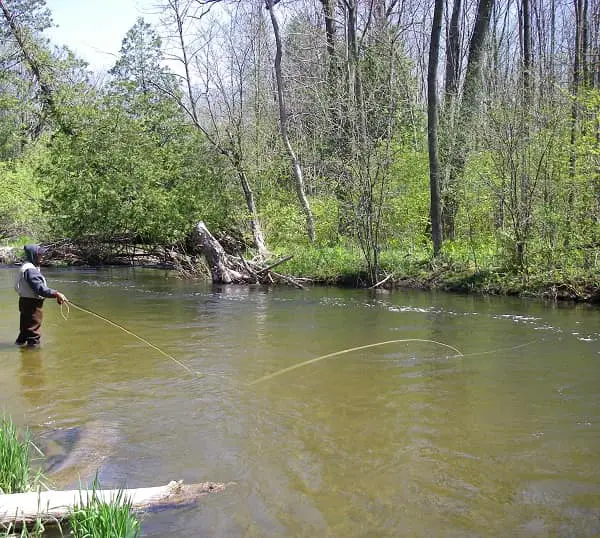
I just read a quote from a top competition angler, and it was simple and so true: “Fish your flies at feeding speed.”
I don’t know how many times I have guided two anglers and watched one guy catch ten trout or steelhead and the other guy catch only one, or even none.
It happens all the time even if they are both using the same flies, same leader, and same rods and reels.
It often comes down to drag, or micro drag. This drag speeds up your fly so it looks and moves unnaturally in the current, which can shut the trout down.
I would bet that speed control is the number one issue of most anglers who are not catching many trout. Learn how to control the speed of your flies and you will catch ten times more fish.
I discuss this in my Indicator nymphing article, but expert dry fly anglers will tell you that if you drag a fly over a big trouts head you can shut that fish down and spook it. It can completely stop feeding for hours simply because the fly is moving unnaturally fast past them. Remember, they’re not smart, they’re just cautios.
12. Stealth Trumps All: Spooked Trout Won’t Eat
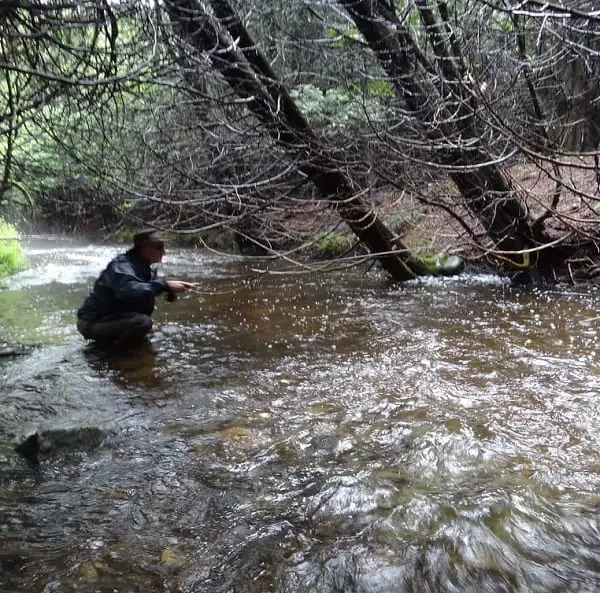
If you want to start catching big trout more consistently, you need to learn how to approach every spot from the right angle and learn to be quiet so you won’t be seen or heard.
It doesn’t matter how good your fly, you leader, and your presentation is if they are spooked.
Guide Tip: Approach From Down River
Since we are on the topic of stealth, my guide tip is to approach a spot from downriver whenever possible and stay behind the fish. Trout almost always face upriver so they can’t look backward If you approach them from behind, they are less likely to see you.
13. Understand Trout Holding and Feeding Water: Learn To Read A River
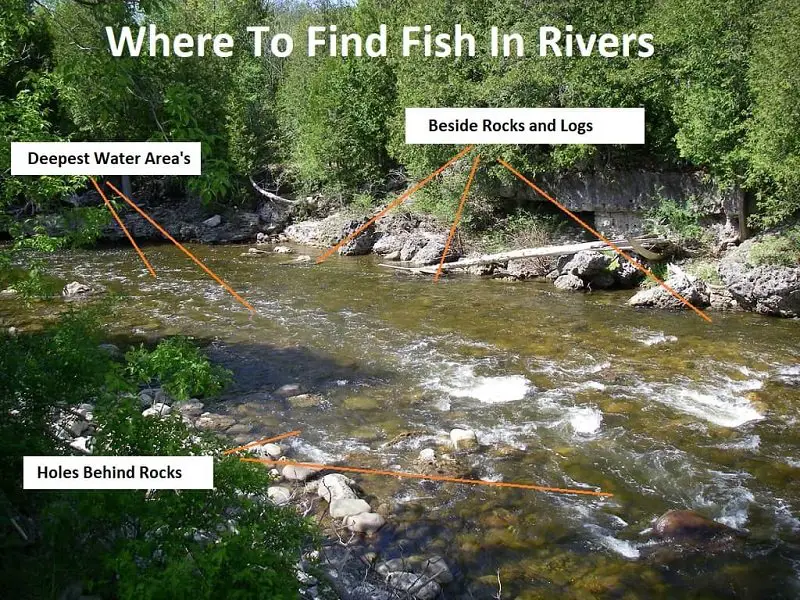
Depending on the river, 90 percent of the big fish are often in 10% of the river. Fish have holding spots and feeding spots. Learning where these spots are is not hard on most trout rivers,, and once you figure out where the trout are, you can target them better and catch more trout.
14. Cover The Water Effectively
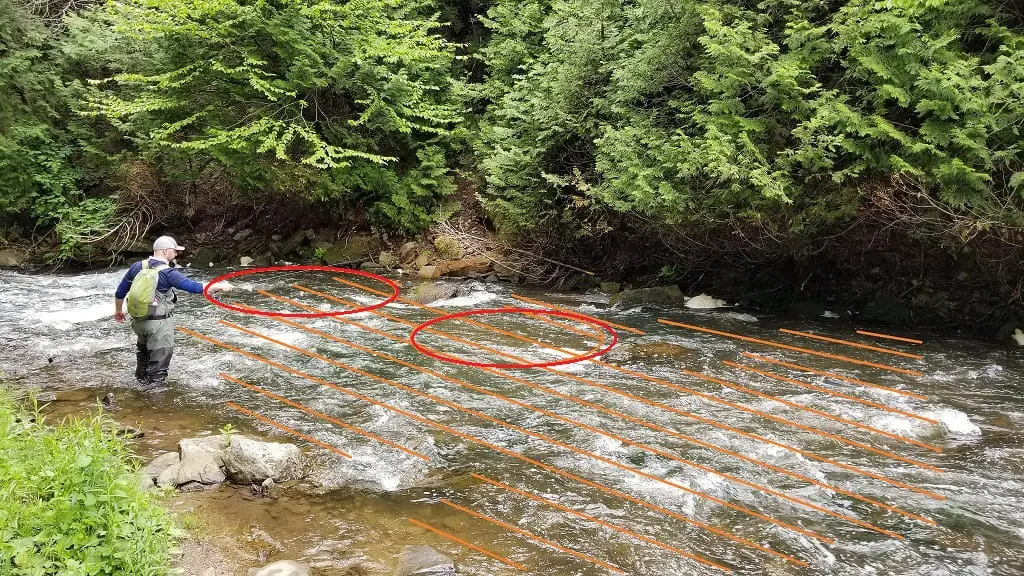
In my experience, many anglers miss a lot of fish because they do not cover the water well enough. They focus all their efforts on obvious spots, such as bubble lines and seams, and deep spots, and then they leave.
I’ve seen big trout holding in water less than a foot deep, and far from the obvious spot. Big trout can position themselves in feeding lanes and high in the pools, or in the rapids above the pool to be able to feed without lots of little trout around.
15. Fish More Productive Rivers
Some rivers don’t have a high density of trout, while other rivers do. I like to fish a lot of catch-and-release sections simply because there are more trout to catch.
Fishing rivers with a high-density of trout gives new anglers confidence, and once you are good at catching trout on these easier rivers, you will do better on more demanding rivers.
16. Fish With Two Flies If Permitted
If you are allowed by law, nymphing with two flies enables you to cover different parts of the water column, as well as test out different patterns simultaneously.
I also like and recommend dry dropper fishing if you are permitted to do so.
17. Keep Your Fly Clean
It’s rare to see a trout grab a fly covered in algae or other debris. I try to see my fly as it leaves the water for my backcast and then see it when it lands. I
l will often drag the fly up to the surface slowly before I cast so I can check it for debris.
I even know how big a splash the fly should make when it hits the water. An oversized splash means it’s got debris on it.
18. Advanced Nymphing: Tight Line Nymphing With No Indicator
Every year I offer my popular and always sold-out Advanced Nymphing classes and anglers that attend these classes often tell me that they see immediate results with much more fish. Learning to fish the tight line modern methods and stop using indicators can greatly improve your success.
I have recently decided to share the private information from my nymphing classes on my page Fly Fishing Nymphs.
19. Learn How To Set The Hook
Setting the hook poorly causes all kinds of problems, from not setting hard enough and not sticking the fish, to setting too hard and then breaking off on the hook set, or even losing flies in the trees behind you.
Setting the hook properly is something I actually teach my clients because most anglers do it poorly.
20. Play Your Fish Properly: Don’t Horse Them In
The first thing I do when a client hooks into a big fish is to tell them to relax and calm down. I want that fish to run and expend some energy so I don’t want my clients pulling hard on a fish fullof energy. Once the trout slows down, then we can focus on working the fish back to us.
21. Guide Tip: Lower your rod tip
Have you ever been told to keep your rod tip high when fighting a fish? Most anglers do this, but if you watch expert competition anglers fighting a fish, you will see them using a lower rod tip with sideways pull, or a combination of a high and low rod tip.
A low rod tip is often a better angle that keeps the fish from jumping, allowing the angler to get the fish in the net faster.
It’s also important to not pull the fish upriver; always pull sideways or downriver, and walk downriver with the fish if necessary.
22. Net Your Fish Better
Netting your fish from the tail is a bad idea! I have netted thousands of fish for my clients, and I rarely ever net the fish from the tail. Always net the fish from the head first, and once the fish is in the net, immediately release pressure on the line so you don’t pull it back out.
23. Pro Tip: Net The Fish With Plenty Of Line Out
When you are ready to land your fish, always have a rods length of line out – NO LESS.
Even better is one or two feet of line longer than your rod. Trust, me, beginners make the mistake of lowering their tip and reeling the the fish right to the tip. This puts the fish 9 to 10 feet away and imposible to land.
Reelling a fish to the rid tip also puts your rod at a high risk of being broken by a thrashing fish.
24. Find A Good Mentor Or A Good Guide
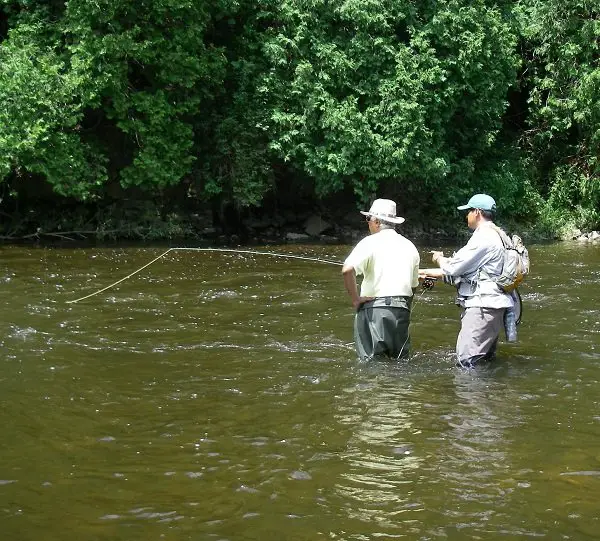
A great fly fishing guide or angler can teach you more in one day than you might learn in two years.
The problem with anglers learning fly fishing on their own is that they sometimes practice the wrong stuff for years without even realizing what they are doing is wrong.
I know some guys can’t afford a guide, and that’s OK, but if you can find a skilled angler as a mentor, you can learn a lot from them, too.
If there are fly fishing clubs near you, they can be a great place to meet guys who can help you improve, and they are also great for local information and spots to fly fish.
25. Utilize Local Fly Shops
Local fly shops often have skilled and knowledgeable staff that are willing to share local information. These are also good places to learn and meet other anglers.
26. Be Weary Of Forums, Social Media, and Big Box Stores
One of the reasons I started this website was because of all the misinformation I saw on forums and social media. While a few guys might give you very good information, other might not. And, if you are new, you want know what is good and what is bad information.
Many of my clients havbe came out to a guide trip with me with the wrong gear. It was gear that was recommended by some guy working in a big box store.
Often, guys working in big box stores are not experts on every aspect of fishing, so you could be getter very generic and even wrong information.
27. The Most Important Tip: All The Little Things Matter:
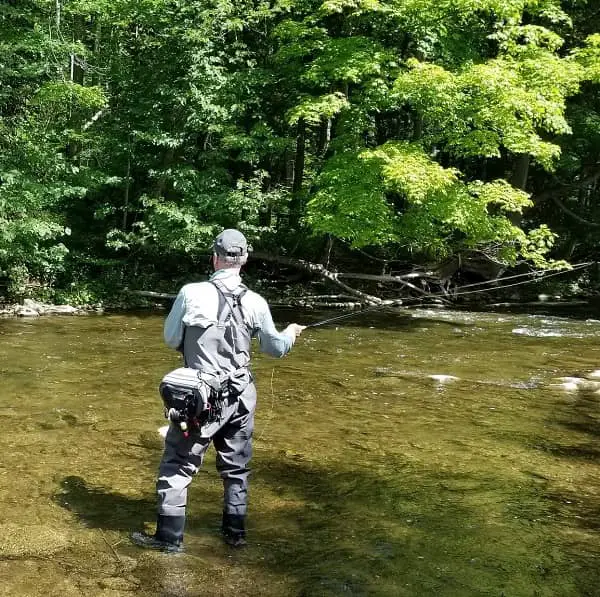
When anglers ask me what is the biggest thing I do when fly fishing for trout that makes me so good at catching trout, I tell them, “It’s not one thing that I do; it’s a lot of little things combined that add up to more fish for me on the river.”
What this means is that in order to catch more trout, everything you do needs to be done or set up in a way that is conducive to catching trout.
What I means is, if you put on a great fly, but the tippet is so thick that the trout sees it, then that fly is actually useless.
Or if your fly and your tippet are perfect, but you drag the fly through the pool, the trout will ignore it.
Each and everything has to be correct!
Or if everything is perfect, you have the perfect setup, you make perfect casts, you get the perfect presentation, but you stomped into the pool and spooked all the big trout, all that perfect stuff you did is now completely useless.
I think of fly fishing for trout as a process, and if one part of that process is done poorly or is skipped, you will struggle to catch fish.
Bonus Tip: Try A Float Trip
I have put ten times more fish in the net for me and my clients by using a fly fishing boat to get to untouched water that other anglers can’t get to.
This untouched water often has more fish that aren’t line-shy or as cautious as trout in areas that get fished a lot. A small pontoon boat or raft is a good and fun option.
It’s actually much easier to do than you would think and I offer tips and advice on how to do it on my page Fly Fishing Boats: Catch More Fish With A Boat.
Tight Lines
Graham
